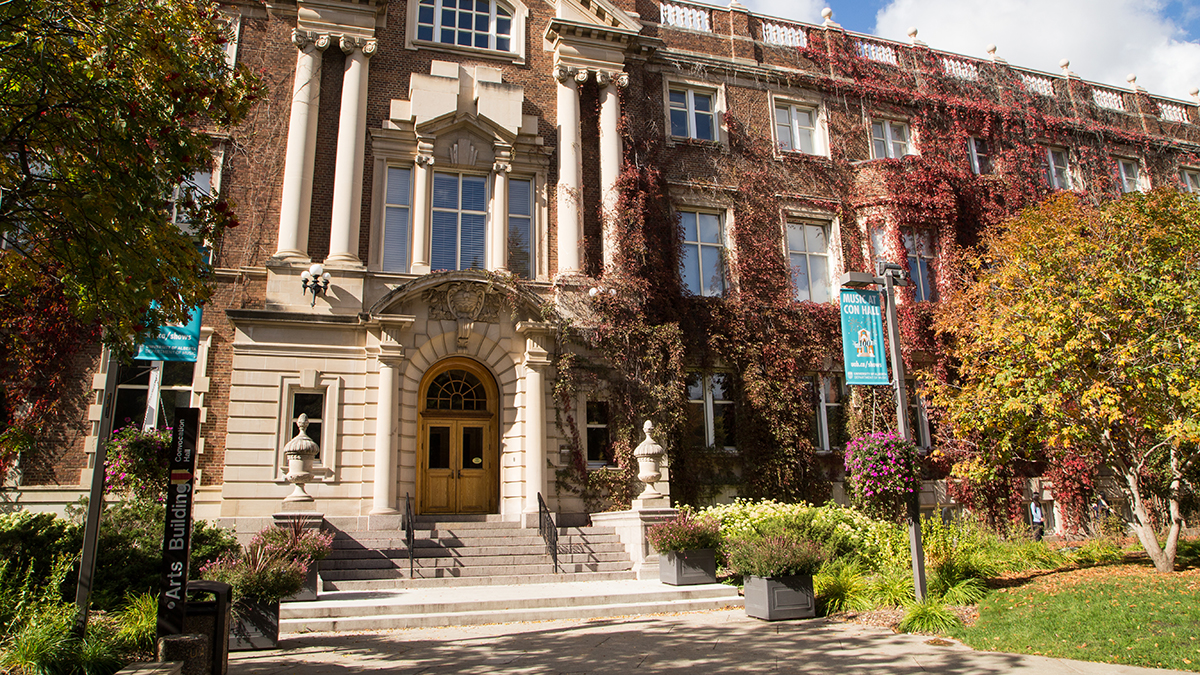 Joshua Storie
Joshua StorieWhen the University of Alberta’s 45 students started classes on September 23 of 1908, they were all in a single faculty: Arts & Sciences.
Following the tradition of western liberal arts education, the first crop of U of A students would have learned about the physical, earthly world and the social constructs that humans built within. The U of A certainly wasn’t perfect in the 20th century. The Alberta Eugenics Board was chaired by one of our profs for 40 years. The Engineering Faculty Association ran an inter-departmental beauty contest for female students in the ‘80s, and it’s a guess, but I take it there were a bunch of other racist and sexist things, too. But, the U of A had it right in having the Arts and the Sciences together.
To me, it’s miraculous that an Arts student can go their whole degree without having a basic scientific understanding of things like climate change and statistics. While the scientific method has its limits, it’s a pretty good tool for gauging the doom of the world — it can quantitatively determine when we’re in a mass extinction, or when our atmospheric carbon levels reach points of no return, or what agricultural practices are polluting soils and the water table. Besides that, it can also teach you about the fabric of reality, why gas is actually useful to us, and why trans-fats aren’t so good for eating. Studying in the Sciences is great for knowing how fucked we are. And in this age, we’re pretty fucked. The embarrassingly low six-credit Science requirement lets students get around learning about the harsh reality of the world and allows them to quickly return to studying social constructs.
The obliviousness goes both ways. Science students can go their whole degree learning about sexual differences from a psychological or biological perspective without ever having the word “feminism” show up on a syllabus. Oh God, we have people trying to quantify phenomena according to sex and gender without ever being taught what sex and gender are. At least Science students have 18 required Arts credits, so the odds that they’ll pick up societal context for whatever test tube experiment they’re running are a bit better.
Merging the faculties would be the start of a bridge between the two. It wouldn’t mean restructuring the respective degrees, but it could be the beginnings of a new alliance. The idea of aligning Arts and Sciences on the same plane could eventually lead to more crossover. It could lead more Science students to accept that their Western tool for quantification is highly contextual and has historically produced results that align with non-scientific societal beliefs. A merge could also bring Arts students to think of climate change as something real rather than a marketing ploy by the elite patriarchy to influence global power dynamics and to generate consumer interest for “green” cleaning products.
I doubt anyone would notice a merge. Having been in both the Sciences and Arts, it’s pretty easy for me to see the common ground between the faculties. The words “critical thinking” are commonly used in courses that ask you to memorize facts, writing is considered important yet instruction is minimal, and students suffer from their collective reluctance to engage with professors. Both faculties boast of groundbreaking research, yet most undergraduates aren’t going to hear of or contribute to these publications. Of course, you’ll find exceptions to everything I’ve listed, but teaching styles and classroom atmospheres are generally the same.
If the U of A wants to create global citizens, or lifelong learners, or whatever it wants to call its graduates, then it should think about how it’s going to deliver a
well-rounded education that fosters
global-scale thinking.
Ideally, there would be one faculty that fosters the entire liberal arts education. There would be departments in the Arts, and some Sciences. Students would pick what they wanted to spend more time in, but they’d benefit overall from being around a wider range of ideas and from using different sorts of tools to uncover knowledge. We’d see fewer Science students scoffing at how Arts students whine about being triggered and don’t have to take labs, and we’d see fewer Arts students scoffing at how Science students don’t know how to analyze the world’s social structures.
We’d end up with a stronger base of knowledge to understand the world with. And we’d also have a larger peer network to complain about the lack of writing instruction. In some ways, we should be jealous of the U of A’s first 45 students.





It’s because of a lack of statistical education the climate change hoax persists. It’s total bunk.
Hmmm … disciplines such as psychology and geography are delivered through inter-faculty cooperation, so an Arts/Science merger is feasible!